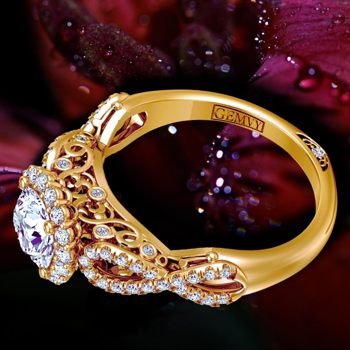
Filigree Engagement Rings - A Buyer's Complete Guide
Introduction
If you're looking for something that steers clear from the modern and trendier options, you cannot go wrong with filigree engagement rings. Vintage engagement rings typically have much more detail than contemporary engagement rings that tend to have a more minimal aesthetic. If you're someone who wants an engagement ring that not only transports you to a different time period but is also unique and truly one-of-a-kind, a filigree engagement ring would be perfect for you. This guide will help you learn about this beautiful design element that can transform a ring into a masterpiece. You can also find an extensive collection of stunning filigree engagement rings at http://www.gemvy.com to truly discover how this vintage technique pairs with a contemporary aesthetic.
What is Filigree?
Filigree refers to the intricate, ornamental design made from metal. Filigree should not be confused with engraving. Engraving is a process that involves carving into the metal of a jewellery piece, whereas filigree involves laying embellished metal atop a piece of jewellery. A pliable, delicate thread of metal (platinum, silver, gold) is curled and twisted into a specific design and soldered on top of a piece of jewellery. Several ornate designs and motifs are created using filigree, instantly making your ring stand out. The twisting design embellishment can look like old scrollwork and has been used heavily in vintage jewellery inspired by flora.
We commonly think that filigree started appearing in jewellery and engagement rings from the late 1600s to the 1800s, really making a mark during the Art Deco era. However, filigree has been discovered to be around since the ancient Greek and Mesopotamia eras, over 5000 years ago. This design element became very popular amongst the Romans. The name "Filigree" comes from Latin words describing the metal strips used to create this embellishment.
Types of Filigree
Open Work Filigree
Open Work Filigree features no backing to the piece. The metal threads soldered together to hold the design together without any metal sheet underneath.
Metal Supported Filigree
Metal Supported Filigree, as the name suggests, is when the metal threads used for filigree are supported by a metal sheet underneath.
What metals to consider?
When it comes to the type of metal that filigree engagement rings use, Platinum usually wins due to its durable nature. However, platinum is one of the rarest metals on earth, making it an expensive option. This Two Row Filigree Milgrain Halo Diamond Setting Heirloom designed by Gemvy can be customised in any metal, but platinum elevates its sparkle.
Other metals like gold or rose gold are also popularly used. If you are considering gold, it is advised not to use 24k gold, given its soft and delicate structure. 14k gold is a better option for its alloy structure, making it more durable than pure 24k gold. Keeping this in mind, Gemvy offers customisation in yellow gold, white gold as well as rose gold, all from 18kt to 14kts. All rings by Gemvy are customisable to suit your wants; for example, this Heirloom Victorian Style Floral Engagement Setting Ring featuring elegant filigree can be customised in gold to accentuate its vintage style.
How is Filigree Created?
Handmade
Beautiful, intricate and ornamental filigree requires skilled craftsmanship. As mentioned before, thin metal strips are manipulated, twisted and woven to form detail. Creating Filigree was and, in some cases, is still done by hand, making it a methodical and time-consuming task. The process starts with stretching metal into thin, threadlike strips; jewellers often do this by hand, requiring a lot of patience. After this, the jeweller uses heated tools to twist and manipulate the metal strips into the desired design. Once the desired design is made, it is then soldered to the metal base. The process is repeated until the design is complete.
CAD
Nowadays, modern technology has made it easier to create filigree. Computer Aided Designs have allowed quicker and more ornate styles of filigree, more accessible. Once the design is made, a 3-D wax is printed and moulds are created. The final piece can be cost-effective. However, if this modern method is not done by a skilled artisan, the handmade filigree unique charm can be lost.
Filigree Vs Milgrain Vs Engraving
Before dwelling further into the qualities of filigree, it’s important to differentiate this design element from others that can sometimes be used interchangeably despite being very different from one another. Filigree, milgrain and engravings are techniques which have been used in jewellery over the years; more commonly, you will see them in vintage and antique jewellery.
Filigree, as described before, refers to manipulating metal threads into patterns soldered together either to each other or to a metal surface.
Milgrain refers to the beading or small bumps and indents applied to the borders of a piece of jewellery.
Engraving is when the surface of the jewellery is cut into grooves to create a pattern or image.
These three techniques can be seen used together in several vintage and vintage-inspired engagement rings in various combinations, as you can see in this Gemvy "Edwardian Style Milgrain Solitaire Custom Engagement Ring" that uses both milgrain and filigree to add character, beauty and style to this piece.
Pros and Cons of filigree?
Filigree is a design element that can genuinely create a dreamy ring. However, all designs have advantages and disadvantages, and this guide will help you learn more about them to see if filigree engagement rings are for you!
Pros:
• A filigree engagement ring, especially handmade, is a truly unique piece
• Filigree engagement rings are perfect for those who are drawn to vintage jewellery designs
• The filigree can add an extra dimension to an engagement ring and draws attention to the centre stone.
• Filigree can be a relatively inexpensive way to add embellishment to a ring.
Cons:
• Filigree engagement rings care and maintenance can be challenging due to their intricate designs. Oil and grime can build up over time.
• Filigree engagement rings are not for people who have an active lifestyle and usually work with their hands, as they can be very delicate, so there is a higher opportunity for accidentally damaging the engagement ring.
• Filigree engagement rings are not suitable for those who prefer modern engagement rings.
• Some handmade vintage or antique filigree engagement rings can cost a fortune, depending on the age and detail.
• Manufacturing filigree ring requires significant kill and experience. All processes involved, from design to polishing to welding, are time-consuming and complex. It is critical that filigree rings are purchased only from experienced companies like Gemvy.
Some Filigree Designs
There are various types of filigree designs, some bolder than others. You're sure to find a design perfect for you or your partner. Gemvy has several designs that are not only vintage-inspired but also embody modern elements.
Scrollwork
Scrollwork filigree uses spirals, twists, and curls to decorate an engagement ring. Scrollwork usually features lacy, delicate designs; however, in some cases can have thicker braiding. This Gemvy filigree engagement ring features delicate scrollwork that will have you in awe: Vintage Style Milgrain Solitaire Elegant Engagement 3.2MM ring.
Floral Filigree
Perfect for nature lovers, you can add floral filigree elements that not only create romance but can also elevate the sparkle of the engagement ring's center stone. The added floral details, as can be seen in Gemvy's Petite Cushion Shaped Pavé Set Halo Diamond Engagement Ring, can truly elevate even a minimal design.
Vine Filigree
Filigree engagement rings also feature vine and leaf ornamental elements in both open-work and metal-supported designs. These nature-inspired filigree elements were very popular during the Edwardian era. The vine filigree can feature elegant thin styles as well as thicker and rope-like designs. This Vintage Filigree Halo Engagement Ring Heirloom designed by Gemvy is a perfect example of a vine filigree.
Filigree looks lovely in all metals and compliments all diamonds and gemstones. You can have subtle touches of filigree or bold accents; in either case, it is a beautiful way to add a personal touch to an engagement ring. As Filigree requires expert craftsmanship, its best to talk to the experts before taking the leap! If you're interested in purchasing a filigree engagement ring, you can talk to experts at Gemvy. They can provide you with additional information and assist you in finding or even customizing the engagement ring of your dreams.


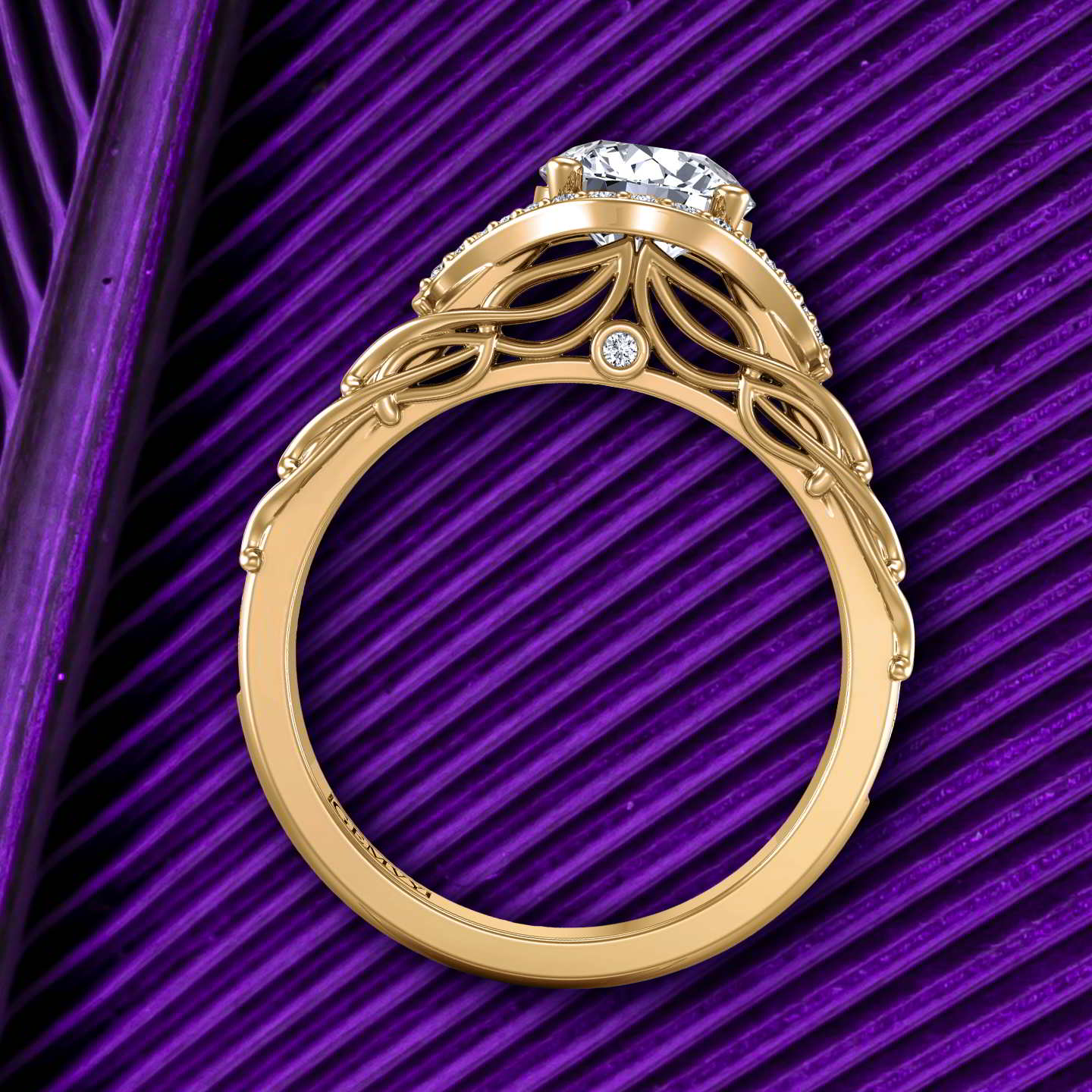

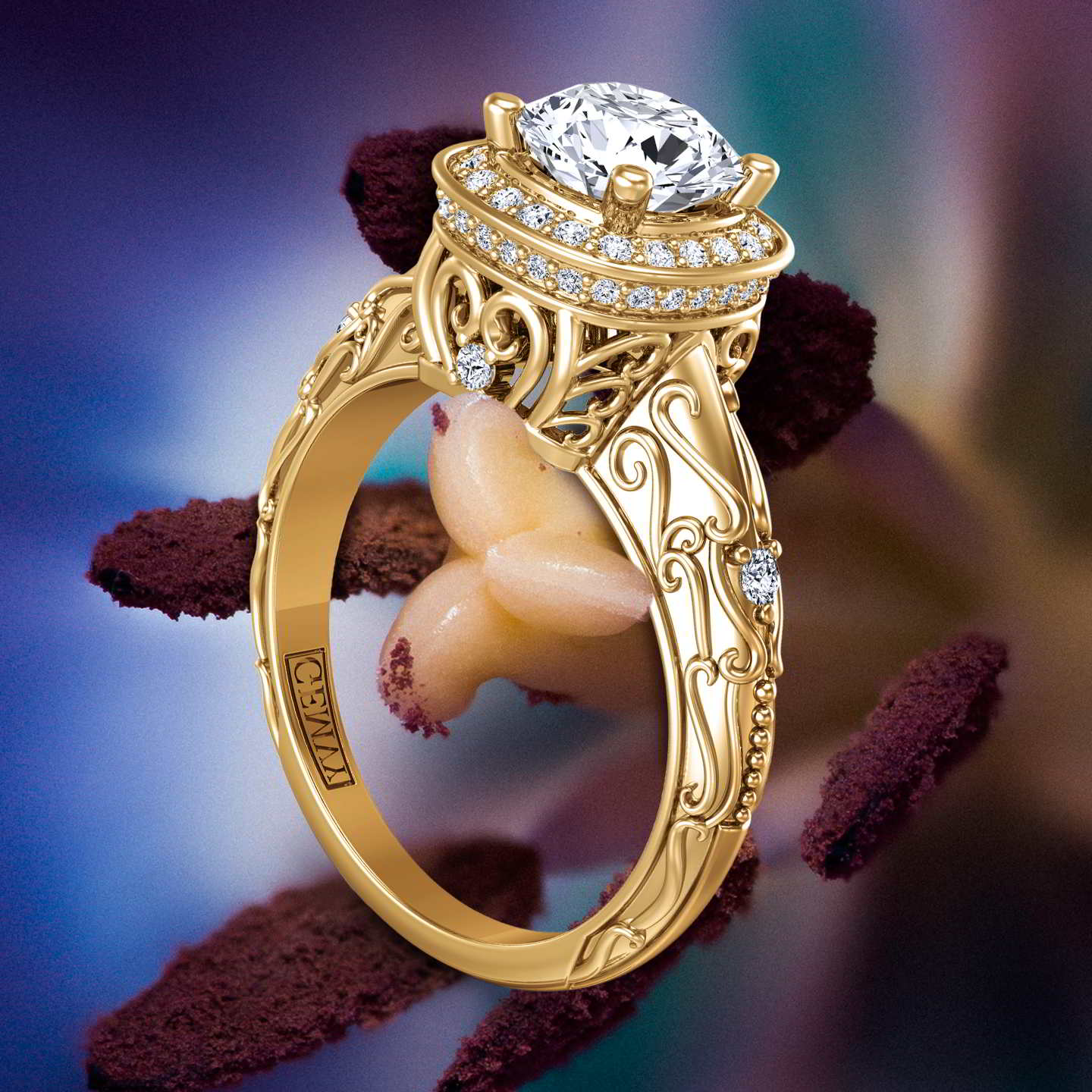

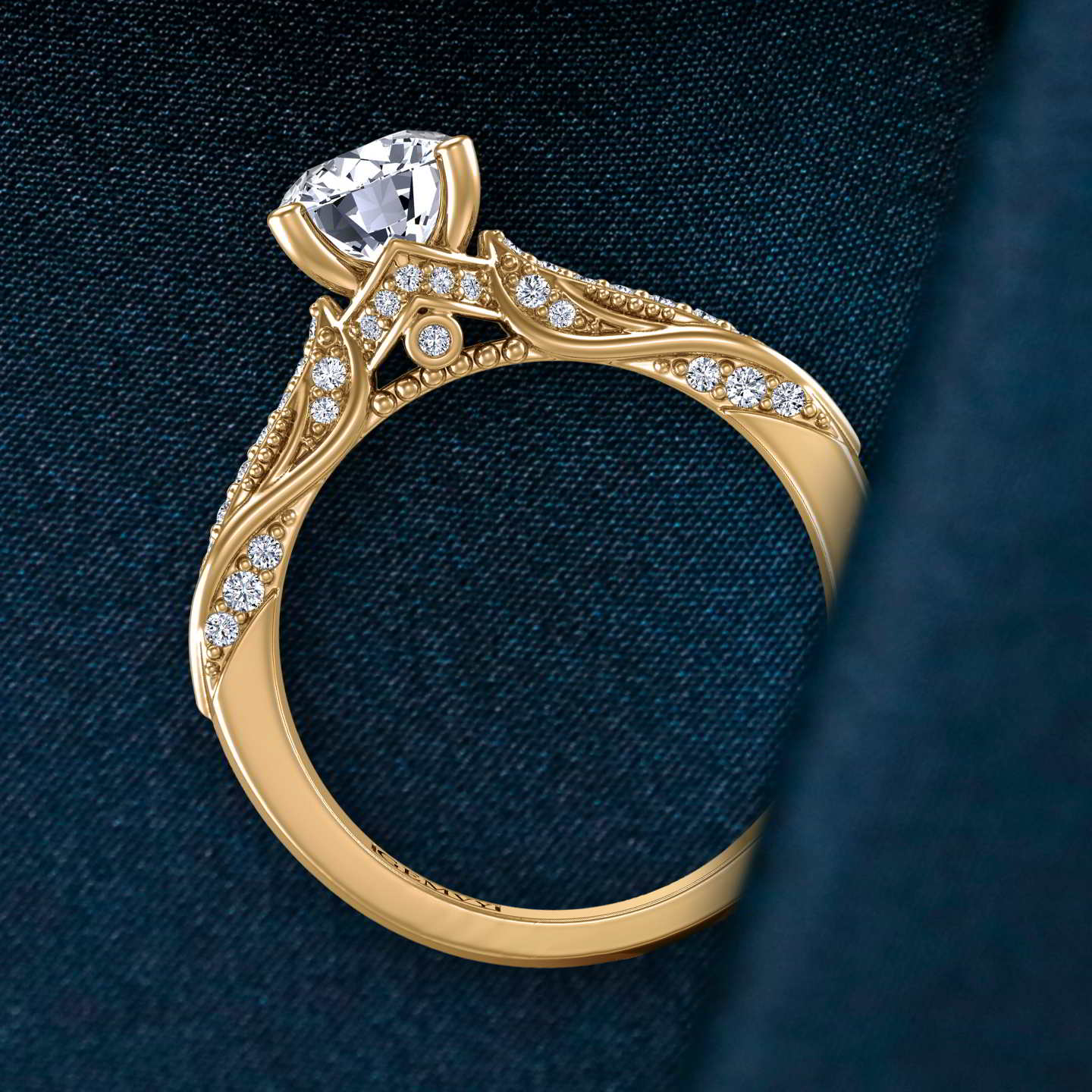





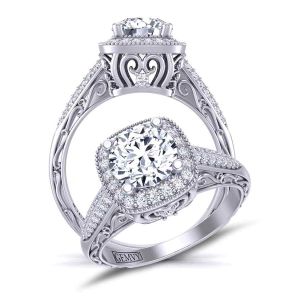
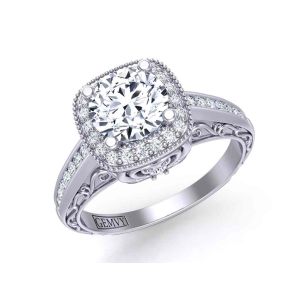
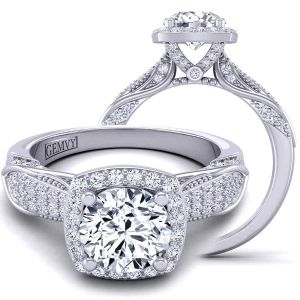
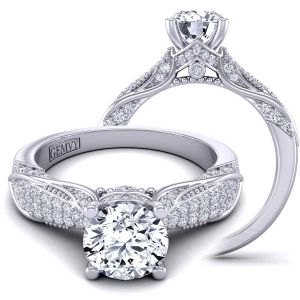

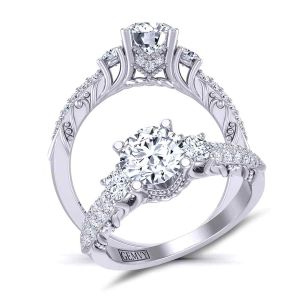
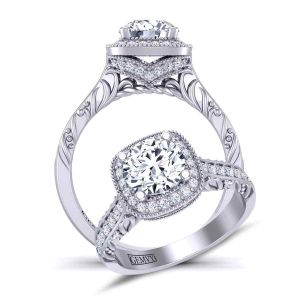
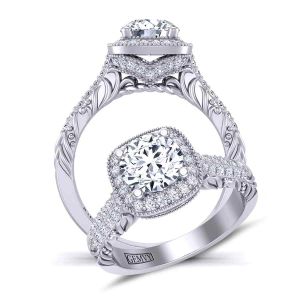
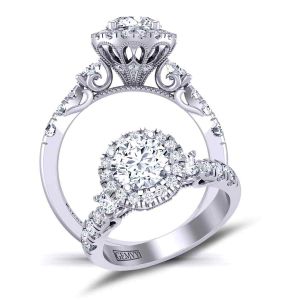
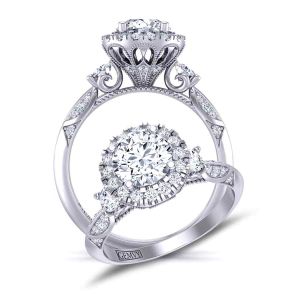
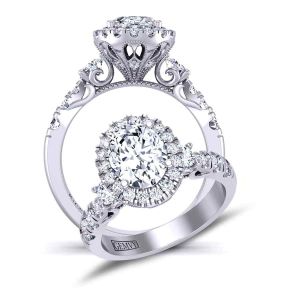
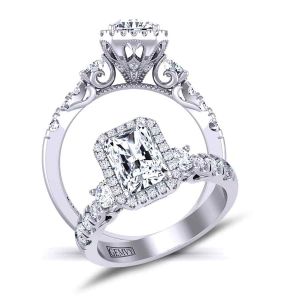

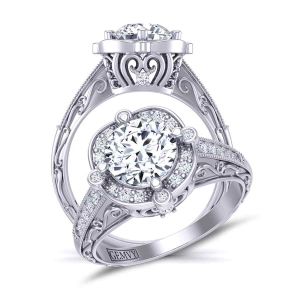
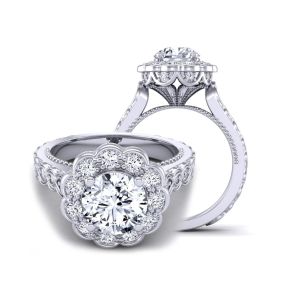
Leave a Reply